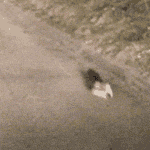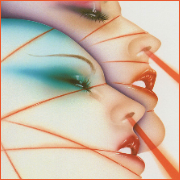(Thread IKs:
PoundSand)
|
Frosted Flake posted:I went for a light nordic ski, I planned for about 3 hours, yesterday after work. About 2 hours in I felt nauseous, then clumsy, then weak, and then I could barely get out of my bindings and stay conscious while I sat down and propped myself up against a tree. It took me about 20 minutes to recover. my only solution is silicone thrills posted:i just have to try my best to make sure i can get to a safe place to sit and wait it out.
|
|
|
|

|
| # ? May 10, 2024 08:13 |
|
It should be no surprise that immunodeficient have different viral kinetics, but seeing the distinction between different types as the authors demonstrate here, is pretty important. "SARS-CoV-2 viral clearance and evolution varies by type and severity of immunodeficiency" https://www.science.org/doi/10.1126/scitranslmed.adk1599 posted:Editor’s summary News article/interview on the matter: https://www.statnews.com/2024/01/24/covid-research-chronic-infection-immunocompromised-patients/ posted:New chronic Covid study offers insight into which immunocompromised patients are most at risk
|
|
|
|
Has anyone in the thread received free Paxlovid that looks like this? And if so: how and where?
|
|
|
|
Olympic Judo Wrestler Maricet Espinosa González Dead at 34 After Heart Attack Okay, I'm absolutely going to write a will now. If this poo poo is taking out Judo champs, it will definitely take out this Jewish chef.
|
|
|
|
congrats on your pax1ovid
|
|
|
|
Animal-Mother posted:Olympic Judo Wrestler Maricet Espinosa González Dead at 34 After Heart Attack If your assets look like mine, it should be a short process 
|
|
|
|
 "Impacts of lid closure during toilet flushing and of toilet bowl cleaning on viral contamination of surfaces in United States restrooms" https://www.ajicjournal.org/article/S0196-6553(23)00820-9/fulltext#%20 posted:Highlights News article on the matter: https://www.cidrap.umn.edu/covid-19/closing-toilet-lid-flushing-doesnt-keep-viral-spray-inside-study-suggests posted:Closing toilet lid before flushing doesn't keep viral spray inside, study suggests
|
|
|
|
Pingui posted:
lid stans btfo 🙄
|
|
|
|
Pingui posted:Has anyone in the thread received free Paxlovid that looks like this? Our boxes have been the same and match the google image search for paxlovid. My wife is on her second box for the 10 day treatment. First was from CVS and second from T2T. She notes an obvious change in the degree of paxlovid mouth. The CVS box had a very strong taste and reminded her of the moment immediately after vomiting, leading to some nausea. The T2T box had a much weaker flavor and is manageable. I don't have the info but I think T2T was several months older. It had an expiration extension paper with it. My wife has been testing negative since day 6. We were talking about how I probably got her infected when we ended isolation in the days before my cytokine storm/paxlovid rebound. If the second phase is a function of ending paxlovid, than she is also at risk of having a similar result on a similar timeline and exposing us so she'll isolate through day 13 or 14. We originally planned to end her isolation Friday night Day 11 if things continued to go well so this only adds a couple more nights on the couch. I'm glad she's having such a mild time. Our symptoms now are just higher HR and easy exhaustion. Today is day 9 for her and 19 for me. My daily activities are normal except for running the dog. I'm walking the dog about a mile a day. Usually we're running 2-4 miles every other day. I'm not even trying to run until March. Energy wise, I only hit the wall a handful of times. I remember at one point walking home from my daughter's school and there is a slight incline that got my heart going and I started sweating and thinking this might be too much but made it home. I haven't noticed any brain issues but I'm not in the best position to judge. My daughter is still testing negative and has had no symptoms. I printed a calendar at the beginning and am reviewing the numbers: symptoms and isolation for the household has lasted 21 days and is on track to last 24 or 25. We've used 3 boxes of paxlovid and 67 tests so far. Mostly RATS and 1 Luciera and 3 or 4 Metrix. Maybe 10-12 masks? I don't really track them. Thank you thread for the links to mask reviews and deals. We've each found the best mask for us and get them in bulk. And thank you for the deals on RATs. I had some 25EA boxes that came out to a few dollars per test.
|
|
|
|
bred posted:Our boxes have been the same and match the google image search for paxlovid. My wife is on her second box for the 10 day treatment. First was from CVS and second from T2T. She notes an obvious change in the degree of paxlovid mouth. The CVS box had a very strong taste and reminded her of the moment immediately after vomiting, leading to some nausea. The T2T box had a much weaker flavor and is manageable. I don't have the info but I think T2T was several months older. It had an expiration extension paper with it. Nice. Thank you for the data. Here’s hoping you’re done with Covid for awhile and your kiddo escaped.
|
|
|
|
Pingui posted:
funded by big medicine cabinet i bet!
|
|
|
|
fosborb posted:it is bespoke care from my cardiologist, the medical director of the boston marathon, and yeah, the tldr was — minimum of a couple weeks of total rest, then a careful and graded return to play. FWIW: in my case, I was able to return to training much more quickly than this thread would advise. looking at last january's calendar, i tested positive on jan 1, rebounded on jan 8 or 9, was antigen positive until jan 19. started short runs and lifting on the 22nd, then was doing two medium to long runs a week (extending by 1-2 miles a week) every week through the marathon in april, with hot yoga and some lifting on the other days. but my activity was definitely "reduced" (below pre-covid infection baseline) for a month — i didn't do anything but maybe a few easy slow walks during my infection, just to get out of the house — and the grading-back-up period was 2-3 weeks. so i suppose it was basically 6 weeks before i was pushing back. i also had the benefit of previously mentioned bespoke medical care, which included preexisting prophylactic measures to reduce my risk of heart attack or stroke (daily baby aspirin and pharmacologically keeping LDL under 40 mg/dl), and, when i had something that felt like maybe palpitations in march, cardiologist gave me a wearable ekg that i trained in for a week, during which we were able to monitor my ticket 24/7 and make sure everything was all right. all of that made me much more confident that there was nothing bad going on, but only because i could get that kind of care. (though for most goons, you can monitor your lipids/lp(a) through your doctor or ultalabtests and then bring your risk down significantly with good old statins/ezetimibe, even if you don't qualify for pcsk9 inhibitors like i do) Frosted Flake posted:Thanks, I'll dig them up. lmk if you need help finding/parsing. i know it's got to be frustrating and in my case i was really worried i was not going to be able to run boston, which was pretty important to me last year. and somewhere in there i did try an easy slow walk of a distance i would have run before my infection — i think it was 6 miles two weeks in — and that knocked me out for two days. i was worried i was cooked. but a few weeks later i was fine. so don't panic, don't push it in the first month.
|
|
|
|
Pingui posted:It should be no surprise that immunodeficient have different viral kinetics, but seeing the distinction between different types as the authors demonstrate here, is pretty important. Thanks very much for posting this. Going to take me some time to parse it all. I'm on an immunosuppressant medication that's commonly used for solid organ transplant recipients, which would presumably put me in the highest group. However in the actual PDF tables, I see one participant was on my exact medication and considered non-severe. Though dosing can vary and I'm on other immunosuppressant drugs too that are normally not considered extreme, so hard to know where I'd fall on this. Also a lot of it was focused on mabs and not paxlovid, so some of that is less relevant now.
|
|
|
|
https://www.tiktok.com/t/ZT8GETANa/ TikTok shop is having a flash sale on Levoit Core Mini air purifiers for $26 ($18 off at checkout), $31 shipped for the next two hours. Limit 1
|
|
|
|
Pittsburgh Fentanyl Cloud posted:https://www.wired.com/story/theres-a-huge-covid-surge-right-now-you-probably-didnt-notice/ RandomBlue posted:second biggest wave but we have good population immunity lol, lmao
|
|
|
|
Tzen posted:lol i just learned today that several family friends households all got hit with covid last week Wifes just mentioned her friend has Flu B right now and that it is MUCH WORSE than Covid. To which I responded, cool I wont get that either. The odd impulse to want to downplay covid at every turn is strong.
|
|
|
|
Rescue Toaster posted:Thanks very much for posting this. Going to take me some time to parse it all. I'm on an immunosuppressant medication that's commonly used for solid organ transplant recipients, which would presumably put me in the highest group. However in the actual PDF tables, I see one participant was on my exact medication and considered non-severe. Though dosing can vary and I'm on other immunosuppressant drugs too that are normally not considered extreme, so hard to know where I'd fall on this. I figured some here would fall in the categories listed; glad it was useful to you 
|
|
|
|
bizwank posted:There's a bunch of different sources for Covid deaths broken down by age/sex online, and motorcycle deaths in the US top out at around 5500/yr, but it's probably easiest to just use this site (which uses CDC data): https://oddsofdying.com/ But doesn’t the full face stop you from riding your bike in restaurants?
|
|
|
|
Bernie did an opinion piece on long COVID, essentially summarizing the senate committee hearing on long COVID:https://eu.usatoday.com/story/opinion/voices/2024/01/26/long-covid-paxlovid-costs-plaguing-american-healthcare/72337750007/ posted:Bernie Sanders: US is turning its back on long COVID. We'll pay the price if we don't act.
|
|
|
|
New long COVID just dropped:https://www.theguardian.com/lifeandstyle/2024/jan/26/experience-i-woke-up-from-a-covid-coma-with-newborn-twins posted:Experience: I woke up from a Covid coma with newborn twins
|
|
|
|
Posting on the fall of Rome page.quote:In March 2020, I was healthy and enjoying being 24 weeks pregnant with twins, which had come as a joyful surprise. Then I contracted Covid-19, probably at work. I’m a rheumatology consultant at Birmingham city hospital, and had been risk-assessed to work from home. But I have a duty of care to my patients and went to the hospital for some in-person commitments. Hospitals, including ours, were increasingly overwhelmed by Covid patients. quote:In all, I was in hospital for six weeks and the twins spent 116 days in the neonatal ICU. I am forever grateful that our care was managed by such excellent colleagues. The NHS doesn’t always blow its own trumpet when it does great work like this. Some hospital administrator absolutely blew their own trumpet years before for just‐in‐time inventory that saved pence by not stocking minor niceties like FFP3 respirators for use in the event of an airborne pandemic. Platystemon has issued a correction as of 13:47 on Jan 26, 2024 |
|
|
|
Don't expect any of the new antivirals to get approval any time soon:https://time.com/6588624/covid-19-antiviral-treatments-us/ posted:COVID-19 Antiviral Drugs Promise Speedier Recoveries. But They’re Not Available in the U.S.
|
|
|
|
Pingui posted:New long COVID just dropped: quote:Even when I saw the babies, I thought it was a dream and they weren’t mine  
|
|
|
|
I hope we don't waste the mentioned opportunity, though I am sure we will.https://www.reuters.com/business/healthcare-pharmaceuticals/covid-beyond-labs-unite-boost-genomic-surveillance-globally-2024-01-25/ posted:COVID and beyond: labs unite to boost genomic surveillance globally
|
|
|
|
quote:The ongoing coronavirus disease 2019 (Covid-19) pandemic continues to inflict an important burden on global health and health care systems worldwide.1 Vaccination can lessen the effect of the disease in high-risk groups but is less effective in preventing infections caused by emerging severe acute respiratory syndrome coronavirus 2 (SARS-CoV-2) variants with strong immune evasion.2,3 Shaking my head I cannot believe that the doomer sickos at The New England Journal of Medicine accepted the paper. Oral Simnotrelvir for Adult Patients with Mild-to-Moderate Covid-19 quote:A total of 1208 patients were enrolled at 35 sites in China; 603 were assigned to receive simnotrelvir and 605 to receive placebo. quote:We initiated this trial on August 19, 2022, in China. Remember that cope thread a couple weeks ago that posited that China was administering antivirals en masse and actually playing four‐dimensional chess in living with the virus? Yeah. No. As for the study itself, I’m not that impressed with the endpoints of timescale to symptom resolution and decrease in viral load. You can do better than that. It takes a larger trial though. It’s clearly better than nothing, but I want to see noninferiority versus Paxlovid or Ensitrelvir. Having a strict cutoff of seventy‐two hours may also play a role in the results.
|
|
|
|
Piece on PEM (just an excerpt, but it is good in its entirety):https://www.theatlantic.com/health/archive/2024/01/long-covid-exercise-post-exertional-malaise/677242/ posted:‘If Exercise Could Cure This, I Would Have Been Cured So Quickly’ Archived link: https://archive.vn/aMtQQ
|
|
|
|
Platystemon posted:Some hospital administrator absolutely blew their own trumpet years before for just‐in‐time inventory that saved pence by not stocking minor niceties like FFP3 respirators for use in the event of an airborne pandemic. JIT for pandemic preparedness is the dumbest poo poo. Imagine thinking it would save money, when this result should have been obvious: https://www.theguardian.com/politics/2024/jan/25/uk-government-wasted-nearly-10bn-on-unused-covid-ppe-figures-show posted:UK government wasted nearly £10bn on unused Covid PPE, figures show
|
|
|
|
It is always shocking how easy and cheap it would be to make the world a better place. It is also always shocking how expensive it is to make it worse.https://thehill.com/opinion/finance/4427204-removing-draconian-budget-cuts-isnt-enough-bring-back-the-covid-safety-net/ posted:Removing draconian budget cuts isn’t enough: Bring back the COVID safety net
|
|
|
|
anyone know what the CADR of a 10” corsi cube is
|
|
|
|
Steve Yun posted:anyone know what the CADR of a 10” corsi cube is Not possible without specifying the fan.
|
|
|
|
I wish something more could be done, but I am not sure my screams of "new normal" can be any louder. Snark aside, this is another article in the long string of articles on the unsustainable healthcare death spiral, note that the period mentioned starts October 2022 and continues on till now; in other words this is not a consequence of the initial Omicron wave, but entirely within the time frame where everyone ignores COVID.https://www.massgeneral.org/news/press-release/mgh-facing-unprecedented-capacity-crisis posted:JAN | 19 | 2024
|
|
|
|
 "Long COVID is associated with severe cognitive slowing: a multicentre cross-sectional study" https://www.thelancet.com/journals/eclinm/article/PIIS2589-5370(24)00013-0/fulltext posted:Summary
|
|
|
|
Pingui posted:Piece on PEM (just an excerpt, but it is good in its entirety): I work in Allied Health with people with chronic disease in Australia, so this area is of interest. Fun fact, I'm legally required to have private indemnity insurance & also be annually accredited by my certifying health body, or it's illegal for me to work in either the private health field OR public health in Australia, period. My area of health is Clinical Exercise Physiology, which focuses mostly on chronic diseases: the benefits of and more importantly, real side-effects/pitfalls of exercise for specific medical conditions and how exercise interacts with both medications and these specific diseases e.g. "The treatment for this particular stage of Parkisons is X medication, which causes Y side-effects: avoid this particular type of exercise and do Z type of assessments." Physiotherapy here in Australia is generally more focused on acute injuries/protocols and manual therapy, whereas my clinical field is much more focused on the chronic disease .e.g people with Parkinsons, Motor Neurone Disease, cancer & post cancer treatment, Stroke etc. For acute injuries, physiotherapists are absolutely the specialists in that field, not me, and I freely admit I don't know everything: I've referred clients onto more qualified people, I'm not an expert on certain conditions and I've asked for help on multiple occasions. ME/CFS is very, very poorly researched, treated & badly misunderstood by the medical field, period, but I'm curious to hear the foreign perspective about exercise & ME/CFS, as I was taught a very conservative approach in my studies, and that high intensity/rapid progression of exercise difficulty for these patients is an absolute no-no. I get the sad impression that overseas treatment for it is just "Work harder and it'll solve everything, it's all in your head lol" nonsense. One of my senior lecturers back in 2016 had a client with ME/CFS. After over a year of working with her, she could do 2 sets 60 of fairly moderate intervals on a bike and that was her entire workout. She had to work up to that level; there was tons of education, daily feedback from her and setbacks along the way. He literally started her off with 1 set of 15 seconds on a bike. Why so easy? She was working full time with young children: if she did more exercise than that, she was so fatigued for the next few days, she couldn't work, do any domestic chores or look after her kids at all. Without exaggeration, she was "If I awake with my bedroom on fire and all I have to do is get out of bed then walk/crawl out the bedroom door to safety, I will burn to death in my bed, because I can't even roll over a few centimeters to reach the edge of the bed to fall out" levels of fatigue. My lecturer only gradually increased the duration when a) she had been at that level for several weeks b) her kids were free from school or she had time off work, so if the increase in intensity was too much for her, it wouldn't affect her life that badly and c) he only increased the duration by an extra 15 seconds & nothing else: she then stayed at doing just the extra 15 seconds for many weeks before they tried increasing the intensity again. The client could absolutely do more than 2 minutes on the bike if you held her at gun point, BUT her fatigue for many days afterwards would be utterly debilitating. We were taught the "Letter/Envelope Theory" basically, at the start of the week, a ME/CFS patient has only a limited amount of endurance (cash in a letter) that they have to use for the entire week, and this encompasses all forms of physical activity (daily chores like shopping, cleaning) and exercise (structured planned workouts). If you do a fair amount of physical activity for daily tasks or do a hard workout in one day, that'll use up most of the money in the letter, which you then have to live off for the rest of the week. Hence why my lecturer spent a lot of time with education on energy management, getting the client to be very methodical and adapt with how they do their work and domestic chores (e.g. if I have to do a lot of extra stuff at work one day, then I must avoid doing anything other than mild physical activity for the next few days and get my husband to pick up the slack) & recognizing early signs of her fatigue. One of my colleagues pre-Covid was teaching a Continued Professional Course overseas, and to her absolute horror, she had to explain to a large group of American physiotherapists this general concept: they were like "Huh? I've been making my ME/CFS clients do 2 hours of high intensity exercise three times a week and berating them for being lazy when they struggle to do basic tasks for the week, what do you mean I shouldn't do this?"
|
|
|
|
Livo posted:(..) Thank you for the great post; sadly this seems to be the norm. With the new mitochondrial dysfunction results, I hope that will change, especially if it can (eventually) be objectively diagnosed with simple blood work.
|
|
|
|
thanks for sharing. how are you and your colleagues managing hazard exposure? I was just in physio for a chronic degenerative condition* and the bay next to me had an obviously symptomatic, coughing and stuffed up, man talking about how rough the “flu outbreak” is in his home. I had an aura on (elastomerics get in the way for this), and the PT wears a procedure mask for me, but it hardly seems safe and I worry that I’m going to lose my physiotherapist to long covid one of these weeks. since the CFS education is so good compared to North America, how are you seeing PPE usage and other precautions settle out in your field? is there any hope in communicating or educating this clinic? * veterans affairs Canada has a shiny new private/public partnership so I get to go through all the same case management induction bullshit I did 14 years ago when this injury happened woo hoo, excellent use of public funds 
|
|
|
|
|
bred posted:Our boxes have been the same and match the google image search for paxlovid. My wife is on her second box for the 10 day treatment. First was from CVS and second from T2T. She notes an obvious change in the degree of paxlovid mouth. The CVS box had a very strong taste and reminded her of the moment immediately after vomiting, leading to some nausea. The T2T box had a much weaker flavor and is manageable. I don't have the info but I think T2T was several months older. It had an expiration extension paper with it. Thank you for the report and answer to my question. It seems likely that the old doses are less potent. As you implicitly surmised the packaging I posted is the new one (NDA, versus the old EUA packages), so distinguishing new and old should become fairly easy the next half year or so. Hence why I was wondering if anyone got it as a freebie, because it is pretty opaque how the government vouchers at Pfizer actually works (to me anyways). Hope you make it through okay with your COVID ~experience~, seems you are doing the right things 
|
|
|
|
bizwank posted:There's a bunch of different sources for Covid deaths broken down by age/sex online, and motorcycle deaths in the US top out at around 5500/yr, but it's probably easiest to just use this site (which uses CDC data): https://oddsofdying.com/ 1 in 87 for suicide is a stand-out on that list
|
|
|
|
I currently work as a sole trader who contracts out to a private company & shared clinical treatment space, so I have to buy all my PPE supplies. My situation is a little different & unusual I admit but I try to work around it: I wear long life N95 masks whenever I see clients: the mask is hand washable and air dried, but the N95 filter is non replaceable and lasts a few months before the filter is replaced as per the instructions. It gets less hot on my face, and the ear loops are large & don't cut into my face. Yes, disposable N95 masks are better protection wise and provide more of a better seal depending on their type, but I've found that they get very uncomfortable to wear whilst physically active (mainly they get hot real fast and the disposable string ear pieces are bloody awful), since my job is much more physical demanding than an Occupational Therapist or Speech Therapist. I could wear a disposable N95 mask if I was mostly sat behind a desk all day but I can't really do that in my line of work. Plus here, buying long life N95 masks is generally cheaper than buying a disposable N95 and using a fresh one every day. My clinical space is shared with another clinician who owns it outright: they have a basic air filter set up at the moment, but I might have to bring in a very small one since if they change their mind on it. I have one at home but it's a bit too big to bring in, so a small one that I can comfortably carry in a little bag would have to do. Not that happy about it but it's not my clinic sadly. Public Health in Australia is a mixed bag: there's N95 masks given for some clinicians, but not others depending on the health district & some EPs (my area) aren't given one, only surgical masks so they have to buy their own N95s. As for private health, it's a crap-shoot: either good N95 masks and great filtering, or stuffy air & surgical masks only, even in cancer treatment private clinics.There are some Long Covid clinics here and the current treatment guidelines given specifically for EPs since 2021 has been "Long Covid is like ME/CFS, so your treatment methods should be similar!" so it's a bit positive. This message isn't really being given to other health professionals though, which would make a big difference IMHO. I'll try to dig up some specific Australia clinician info about the benefits of filtering (for example, a Melbourne Hospital study early in the pandemic found commercial HEPA filters were effective in reducing Covid particles, which was quite useful as a) this was during a cold Melbourne winte and b) hospitals don't have open-able windows for the most part), N95 masks & good ventilation, but I would imagine a lot of this info would have been posted already here or elsewhere in the SA forums. I would suggest that the physio have commercial air purifier(s) in the treatment/assessment bays (even ones that fit on a desk if they are very close to the patient/physio) & also in the break room and the writing up notes location they use, but especially the treatment bays. It's currently 2am here so I'll be a while before I reply, sorry I can't be of much help at the moment.
|
|
|
|
Petey posted:bespoke care from my cardiologist, the medical director of the boston marathon, and yeah, the tldr was — minimum of a couple weeks of total rest, then a careful and graded return to play. Quoting to find this later in case I ever get got; thanks Petey for sharing
|
|
|
|

|
| # ? May 10, 2024 08:13 |
|
Livo posted:I currently work as a sole trader who contracts out to a private company & shared clinical treatment space, so I have to buy all my PPE supplies. My situation is a little different & unusual I admit but I try to work around it: What kind of N95 mask is hand washable and has ear loops?
|
|
|

































